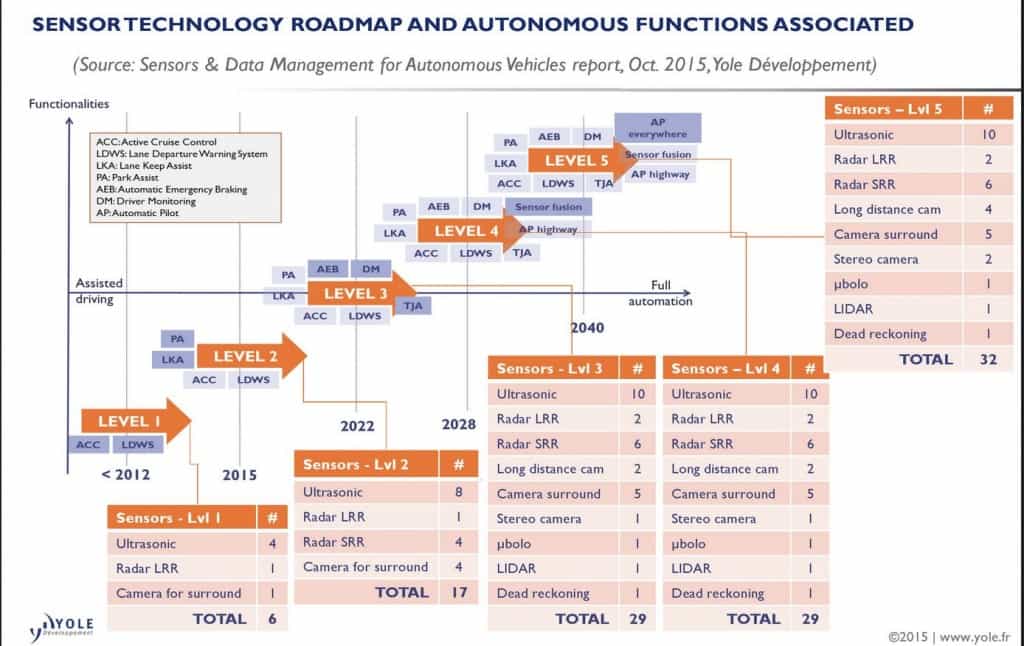 Yes, there is a ton of news about self-driving cars, however, it is going to take a while reports Yole Développement (Yole).
Yes, there is a ton of news about self-driving cars, however, it is going to take a while reports Yole Développement (Yole).
Not until 2045 will more than 70% of all vehicles sold will integrate autonomous functionalities reported Yole. Their report Autonomous Vehicles (October 2015 edition), notes it will take 150 years to replace the driver in high-end automotive. Sensor technologies are today mature, but bottlenecks exist elsewhere.
The connected car is the first step toward autonomous car and consumer electronics are step by step invading the automotive market. For example, IT companies are now providing software platforms to merge smartphones OS and car entertainment platform.
The next step will be mainly focused on the modulation of the vehicle environment sucs temperature monitoring and seat position control setting driver’s preferences via a smartphone.
Traditoinal automakers will be working with technology companies for partnerships, acquisitions and joint ventures in software, self-driving technology …
To be fully autonomous, a car needs numerous sensors including radar sensors (short and long range), ultra-sonic sensors, cameras (visible, NIR , LWIR ), LIDAR ) and dead reckoning sensors. That “autonomy pack” that will be found in 2030 costs today between $10,000 and $ 15,000, and will decrease for the next 10 years leading to a strong adoption. Cost must be reduced before extensive adoptions
By 2045, Yole is expecting 29 sensors to ensure the full autonomy of the vehicle. Long range radar, surround camera and ultrasonic sensors are part of the vehicle between 2010 and 2015. Then between 2020 and 2045 there will be more sensors for new functionalities.
The sensor modules volumes will present a 17% CAGR growth between 2015 and 2030.
Yole listed 5 different levels of autonomy between 2012 and after 2040. Additional functionalities at every level have been also determined by Yole’s team.
In 2022 level 3 includes, Park Assist, Adaptive Cruise Control, Lane Keeping Assist, –Lane Departure Warning System already in place since 2015. Plus Autonomous Emergency Braking, Driver Monitoring, Traffic Jam Assist. This level combines ultrasonic, radar LRR and radar SRR, long distance camera, camera surround, stereo camera, microbolometer, LIDAR and dead reckoning. There will need to be about 29 sensors hat level #3, against 6 sensors at the level #1.
The increasing number of sensors will benefit equipment makers but also to the semiconductor companies,” says Dr Mounier from Yole. “With more than 650 million units per year by 2030, automotive supply chain will face many challenges and will experience a tough battle.”